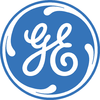Difference between revisions of "Documentation/4.1/Modules/PkModeling"
| Line 27: | Line 27: | ||
PkModeling (Pharmacokinetics Modeling) is to calculate the quantitative parameters from DCE-MRI images. The two major parts of it are: | PkModeling (Pharmacokinetics Modeling) is to calculate the quantitative parameters from DCE-MRI images. The two major parts of it are: | ||
* Convert signal intensities to concentration values | * Convert signal intensities to concentration values | ||
| − | * Calculate quantitative parameters from concentration values | + | This is to conver signal intensities to concentration values. The concentration values will be used to calcualte quantitattive parameters next. |
| + | * Calculate quantitative parameters from concentration values. These parameters include: | ||
| + | Ktrans: volume transfer constant between blood plasma and EES (extracellular-extravascular space) | ||
| + | Ve: fractional volume for extracellular space | ||
| + | MaxSlope: maximum slope in the time series curve of one voxel | ||
| + | AUC: area under the curve, from bolus arrival time to the end time of interval, normalized by AUC of AIF | ||
| + | |||
|} | |} | ||
| Line 48: | Line 54: | ||
** '''Output''': 4 volumes in nrrd, showing the maps of quantitative parameters. These parameters are ktrans, ve, maximum slope, and area under the curve (AUC). | ** '''Output''': 4 volumes in nrrd, showing the maps of quantitative parameters. These parameters are ktrans, ve, maximum slope, and area under the curve (AUC). | ||
* '''Parameters''' | * '''Parameters''' | ||
| − | ** ''' | + | ** '''PkModeling''': |
| − | |||
| − | |||
| − | |||
| − | |||
| − | |||
*** Concentration calculation: | *** Concentration calculation: | ||
| − | **** T1 Blood Value | + | **** T1 Blood Value |
| − | **** T1 Tissue Value | + | **** T1 Tissue Value |
| − | **** Relaxivity Value | + | **** Relaxivity Value |
| − | **** | + | **** Signal Gradient Threshold Value |
*** Quantitative parameters calculation: | *** Quantitative parameters calculation: | ||
**** F Tolerance: Function value tolerance | **** F Tolerance: Function value tolerance | ||
**** G Tolerance: Gradient magnitude tolerance | **** G Tolerance: Gradient magnitude tolerance | ||
**** X Tolerance: Search space tolerance | **** X Tolerance: Search space tolerance | ||
| − | **** Epsilon: Step | + | **** Epsilon Value: Step |
| − | **** MaxIter: Maximum number of iterations | + | **** MaxIter Value: Maximum number of iterations |
| − | **** Hematocrit | + | **** Hematocrit Value |
| − | **** | + | **** AUC Time Interval Value: Time interval for AUC calculation |
| + | ** '''Acquisition''': | ||
| + | *** TR Value: Repetition time, | ||
| + | *** TE Value: Echo time, | ||
| + | *** FA Value: Flip angle, | ||
| + | *** Time Axis: Time series. | ||
| + | |||
|} | |} | ||
<!-- ---------------------------- --> | <!-- ---------------------------- --> | ||
{{documentation/{{documentation/version}}/module-section|Similar Modules}} | {{documentation/{{documentation/version}}/module-section|Similar Modules}} | ||
| + | * [[Documentation/4.1/Modules/MultiVolumeExplorer]] | ||
| + | * [[Documentation/4.1/Modules/MultiVolumeImporter]] | ||
<!-- ---------------------------- --> | <!-- ---------------------------- --> | ||
{{documentation/{{documentation/version}}/module-section|References}} | {{documentation/{{documentation/version}}/module-section|References}} | ||
| + | * Knopp MV, Giesel FL, Marcos H et al: Dynamic contrast-enhanced magnetic resonance imaging in oncology. Top Magn Reson Imaging, 2001; 12:301-308. | ||
| + | * Rijpkema M, Kaanders JHAM, Joosten FBM et al: Method for quantitative mapping of dynamic MRI contrast agent uptake in human tumors. J Magn Reson Imaging 2001; 14:457-463. | ||
<!-- ---------------------------- --> | <!-- ---------------------------- --> | ||
Revision as of 16:49, 5 June 2012
Home < Documentation < 4.1 < Modules < PkModeling
Introduction and Acknowledgements
|
Extension: PkModeling | |||||
|
Module Description
|
PkModeling (Pharmacokinetics Modeling) is to calculate the quantitative parameters from DCE-MRI images. The two major parts of it are:
This is to conver signal intensities to concentration values. The concentration values will be used to calcualte quantitattive parameters next.
Ktrans: volume transfer constant between blood plasma and EES (extracellular-extravascular space) Ve: fractional volume for extracellular space MaxSlope: maximum slope in the time series curve of one voxel AUC: area under the curve, from bolus arrival time to the end time of interval, normalized by AUC of AIF |
Use Cases
Tutorials
Panels and their use
|
Similar Modules
References
- Knopp MV, Giesel FL, Marcos H et al: Dynamic contrast-enhanced magnetic resonance imaging in oncology. Top Magn Reson Imaging, 2001; 12:301-308.
- Rijpkema M, Kaanders JHAM, Joosten FBM et al: Method for quantitative mapping of dynamic MRI contrast agent uptake in human tumors. J Magn Reson Imaging 2001; 14:457-463.
Information for Developers
| Section under construction. |


